I’ve been copywriting for 7–8 years now.
Check out my writing portfolio and you’ll see plenty of big names.
Many leads say my rates are too high, too.
It wasn’t always that way.
I remember struggling to get work, undercharging, and just getting by.
We’ve all been there. Have you?
If so, I’m going to help you change that.
I’m going to share with you the fundamental strategies that freelancers need to find copywriting clients.
They are simple, effective, and will get you clients almost immediately.
Look for yourself. 👇
Cold emailing is stupidly effective (If done correctly)
I know, I know.
Many people dread anything that starts with “cold,” mostly because of the reputation of cold calling.
Cold emailing is nothing like the prior, though.
It’s many times more measurable, scalable, and time-efficient.
If a single cold call takes five minutes and you do 40 per day, that’s more than three hours of being on the phone.
Oppositely, you could spend half of that time sending out a hundred cold emails.
I’ve used it to get copywriting clients that pay me up to $4,000/month. No bullshit.
Don’t you want that?
A single client like that could pay for your entire living.
Take my friend Evan at Wisemedia, for instance.
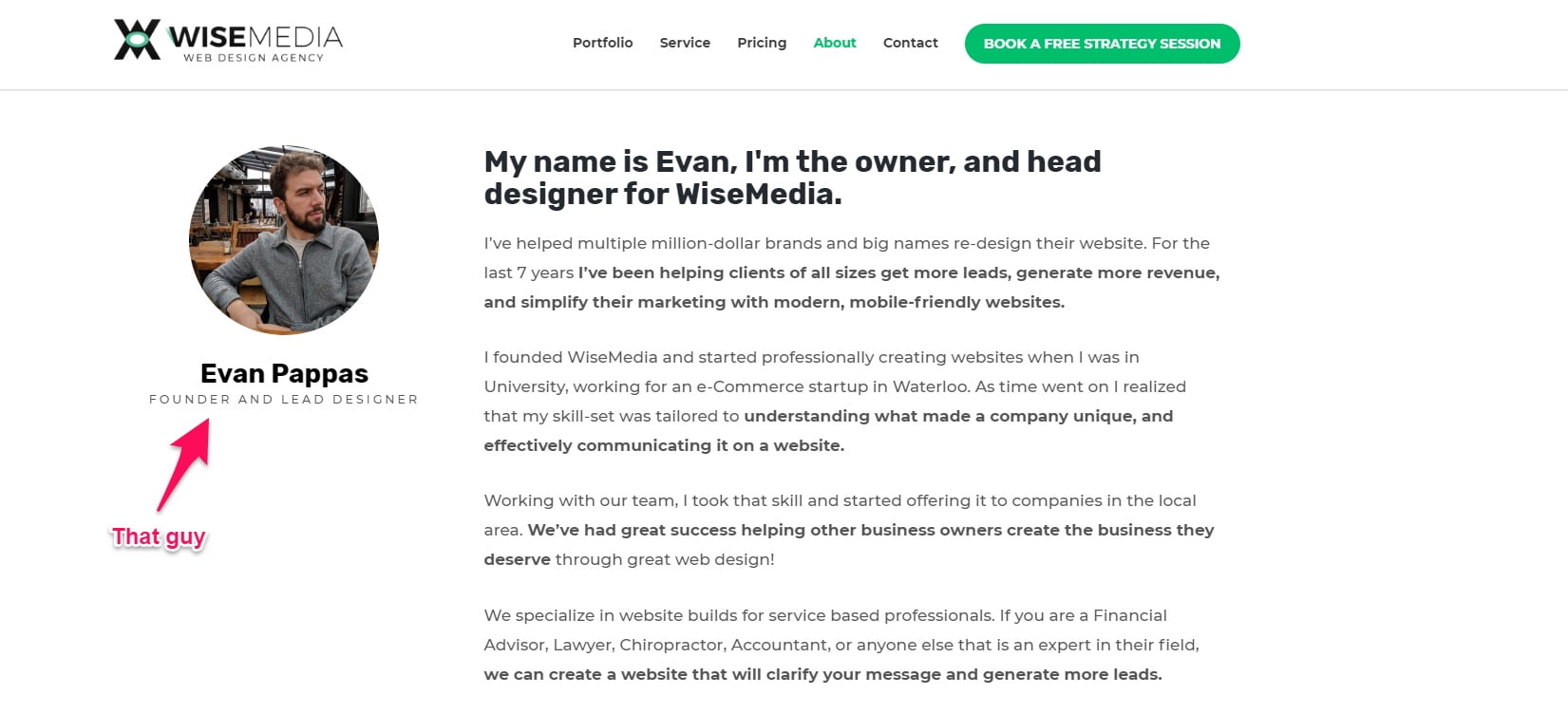
I taught him the system I’m going to be going over ahead. (Also in my copywriting course.)
He sent out 20 emails, and 11 of them turned into leads. That’s insane!
It doesn’t stop there, though…
My other friend Dalton from Huvr did a campaign, and his open rates were 87% and reply rates were 11%.
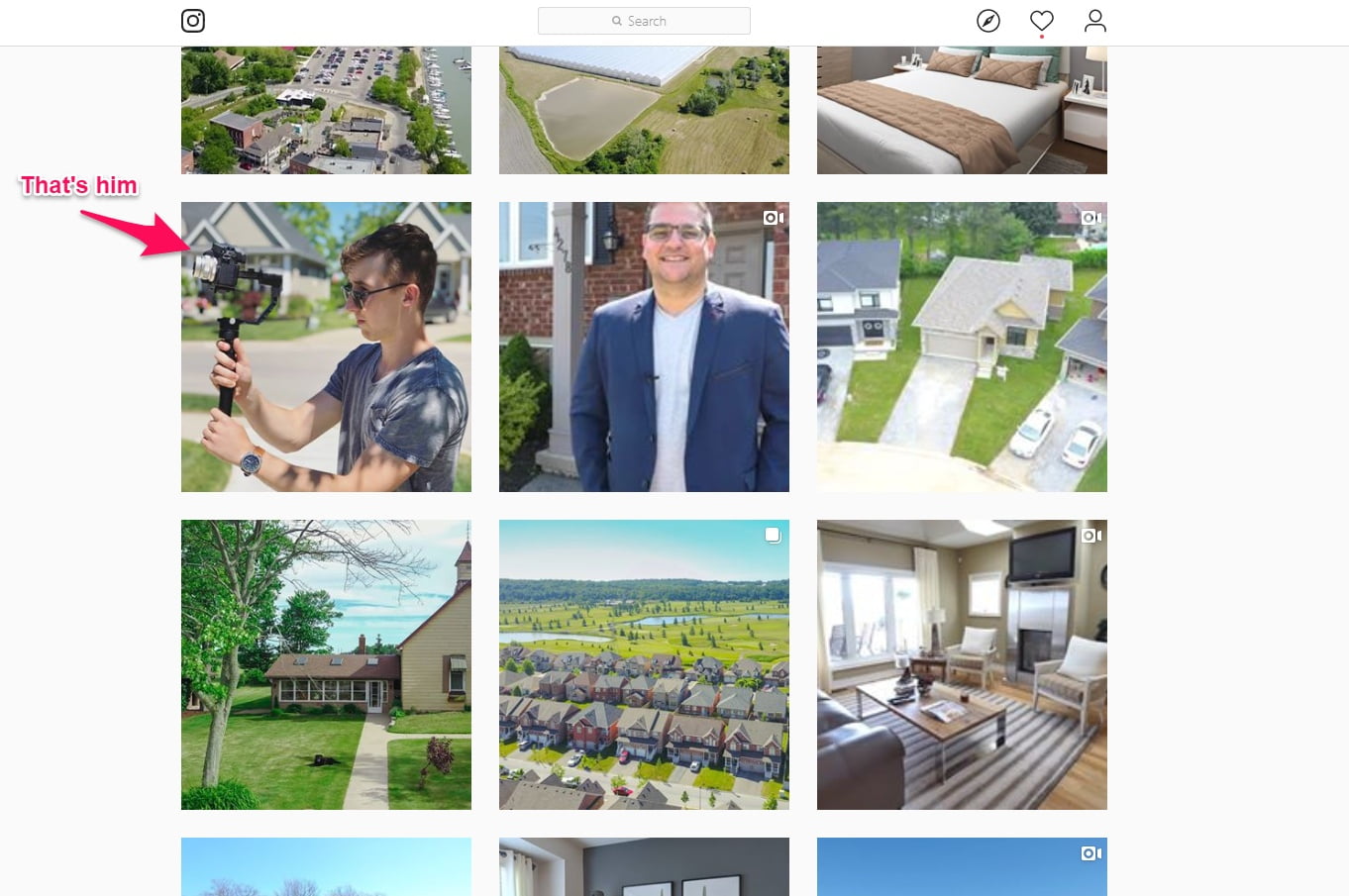
That was the first time he ever cold emailed!
It’s that effective.
Here’s how to do it:
Step 1: Make a list of potential freelance copywriting clients
You need to pretend you’re a mob boss and create a hit list.
And by a hit list, I mean a list of domains of potential copywriting clients.
There’s plenty of ways to do this, including:
- Manual searches on Google for industries, niches, or keywords.
- Using databases like Leadferret, Zoom, Angel List, Crunchbase, etc.
- Searching for companies on LinkedIn.
Let’s use LinkedIn, for example.
Type in a keyword into the search bar and hit enter.
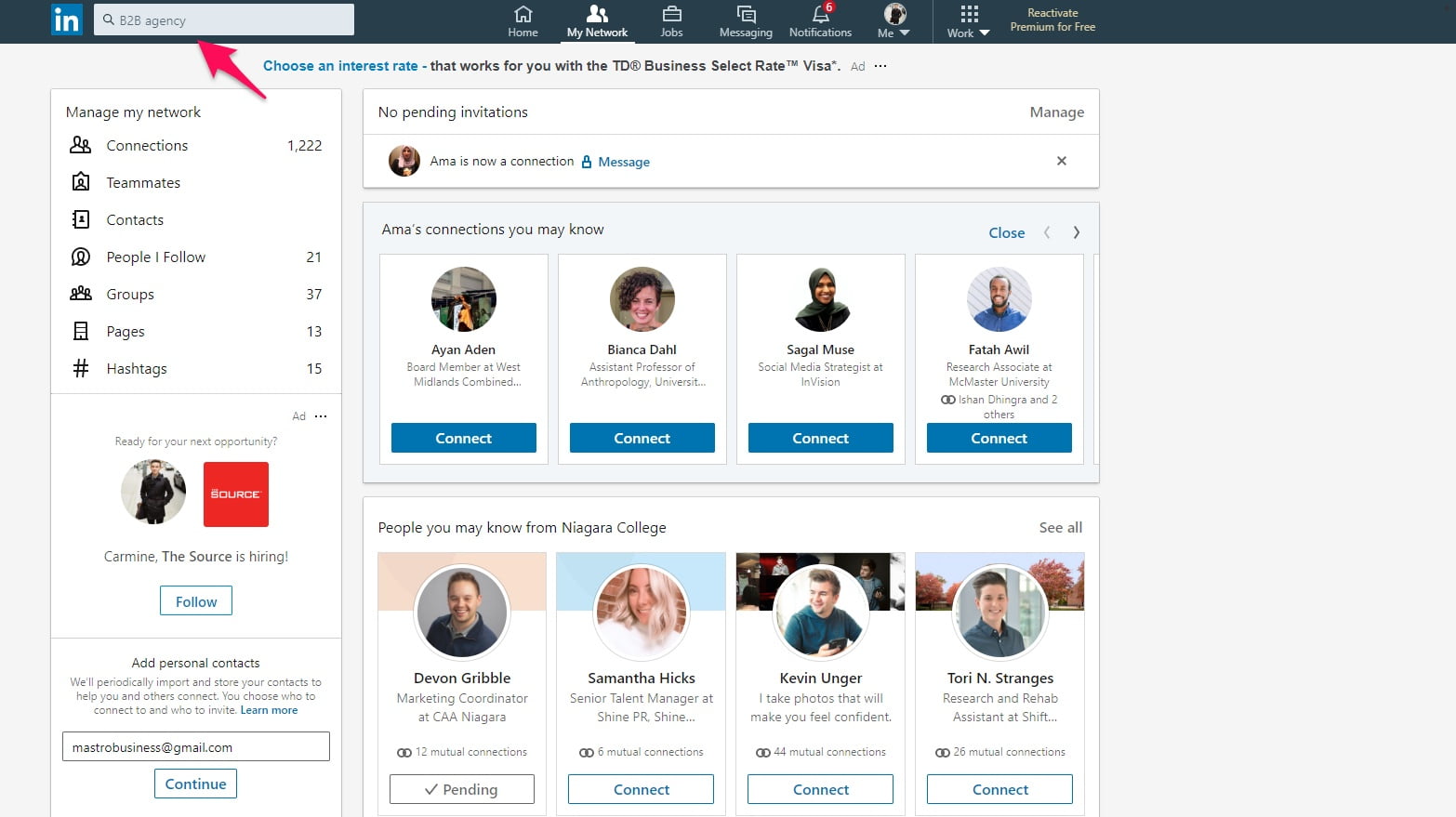
Choose “Companies” from the dropdown menu afterward.
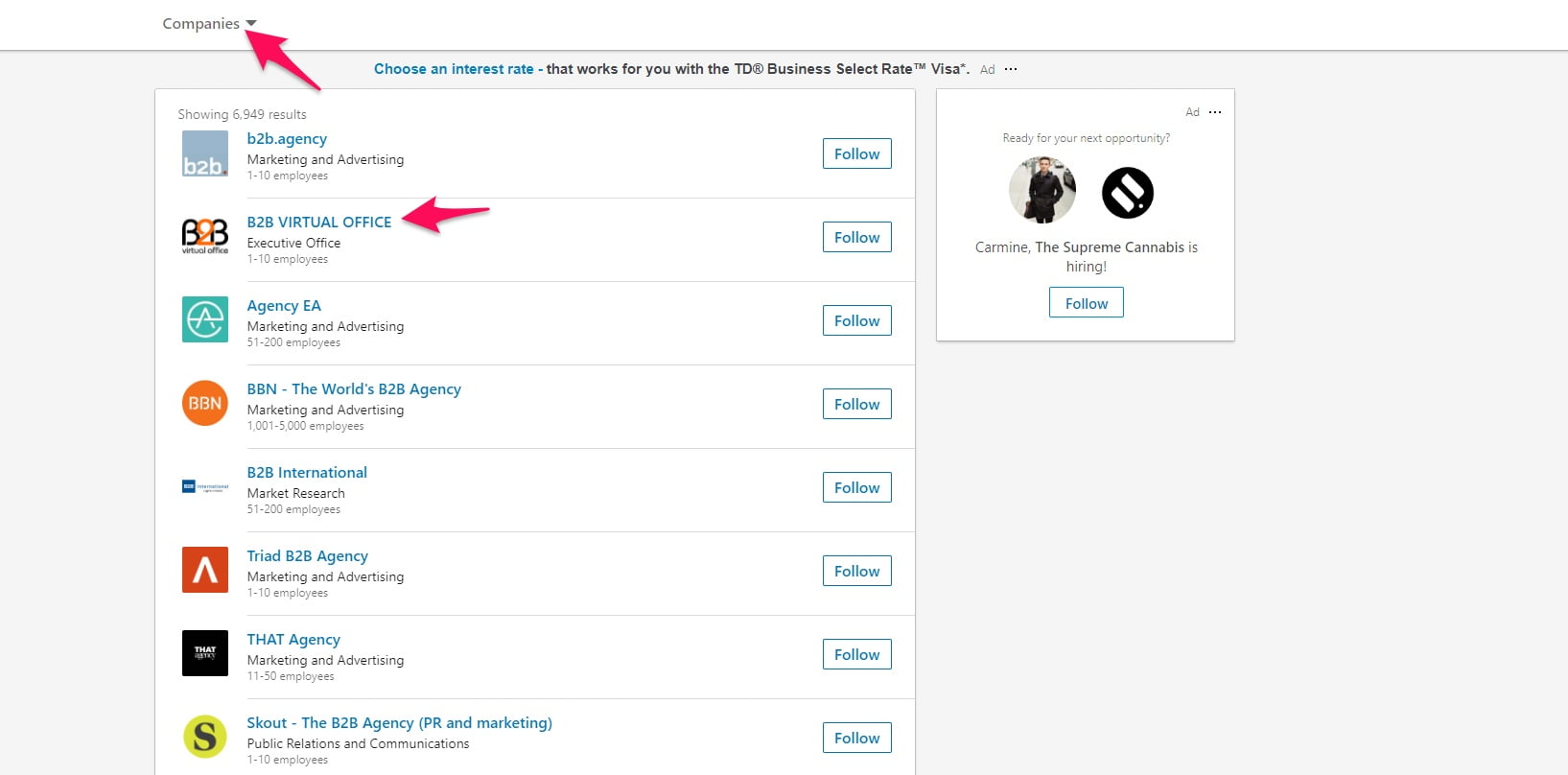
Click the company page of any business that seems like a good lead.
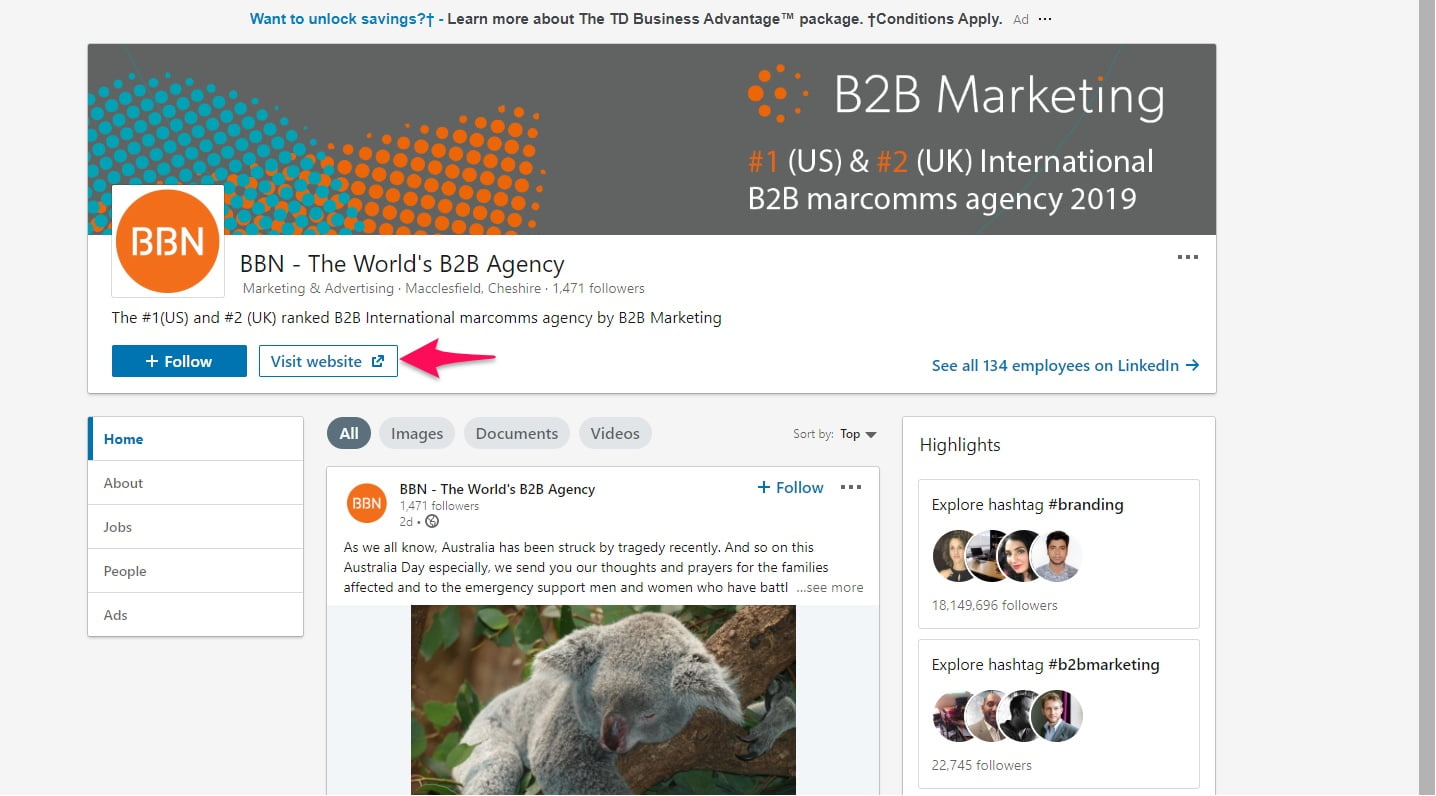
They should have a website link. Copy and paste the URL into a new spreadsheet.
Do this for ten to twenty leads and move onto the next step.
Step 2: Run them through Hunter.io
With your handy-dandy list of lead URLs, it’s time to find the decision makers within these companies.
While you could scour the internet like a raccoon going through garbage, Hunter will save you the trouble.
This tool takes any URL and finds all of the associated emails on the internet.
It analyzes websites, press releases, social profiles, and other sources to get emails.
Begin by entering a domain on the homepage and clicking “Find email addresses.”
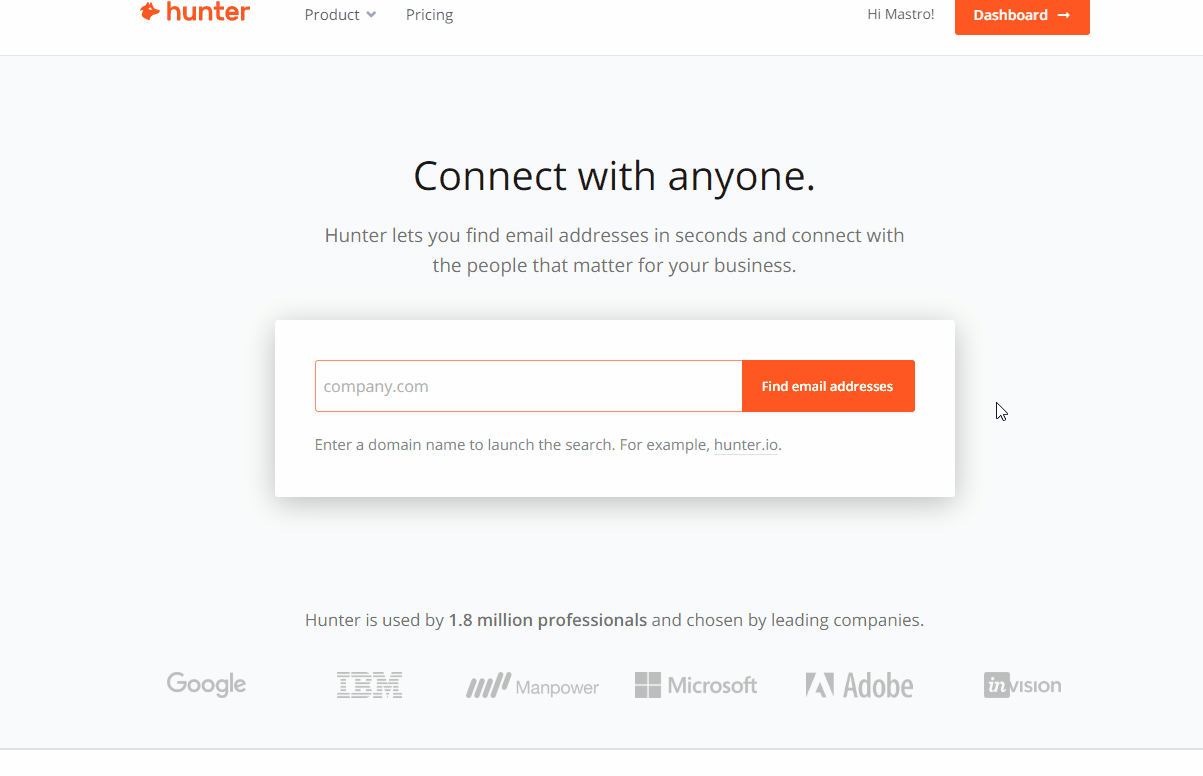
The goal is to find individuals like:
- Content managers
- Vice presidents of marketing
- Chief marketing officers
- Content lead
- Marketing manager
- Marketing director
These professionals are the gatekeepers to offering your services.
Copy their email back into your spreadsheet to stay organized.
Hunter’s free plan gives you 50 searches per month which is enough when you’re first beginning.
You will want to upgrade to their paid plans once you scale cold emailing, though.
Make sure to read my guide on how to cold email for in-depth strategies and templates, too.
Step 3: Send personalized emails
It’s now time to email these leads.
But, hold up.
Do NOT send a copy and pasted message.
Everyone and their mom does this and it sucks.
Open rates, reply rates, and conversions will fall through the floor like a bowling ball.
Don’t do it.
Instead, customize each email for every individual lead. This significantly increases how many copywriting clients you will generate from a campaign.
Since I no longer cold email to get clients, here’s the exact template I used to land high paying jobs:
Hey {First name},
My name is {Your name}, and I’ve worked with {Brand names}. I help companies generate traffic and leads with copywriting.
{Custom compliment} and I was curious if you needed any help writing copy or content at the moment.
Warm regards,
{Your name}
Yep, it’s that simple.
Executives are busy people and don’t have time to read three paragraphs.
A concise and straightforward email respects their time and allows you to sum up your message quickly.
The general idea is to:
- Introduce yourself and what you do as a copywriter.
- Show off any portfolio pieces as social proof.
- Give them a custom compliment. (Clients they have, funding they’ve received, etc.)
- End with a call to action.
I’ve had many clients who told me I’m the only cold email they’ve responded to because it was sincere and targeted towards them.
Nonetheless, not everyone responds to the first message.
Which brings me to my next point.
Step 4: Be annoying with follow-ups (Not literally)
The odds of landing a client from the first cold email is like winning the lottery.
Data has shown that leads tend to get closed on the follow-ups.
You can achieve similar results by following up every one to two days after no response.
Use one of these templates every time you follow-up:
Hey {First name},
I wasn’t sure if you recieved my last email or not, so I wanted to touch base with you again.
Does {Company name} need any help producing copy or content right now?
Warm regards,
{Your name}
Hey {First name},
Would you be kind enough to tell me who’s in charge of marketing for {Company name} so I can forward them my previous messages?
Thanks!
{Your name}
Hey {First name},
Great work on {Recent project}! Would there be a good time this week to hop on a quick call to chat about my previous emails?
Warm regards,
{Your name}
Make them quick and snappy.
I also suggest using a CRM like HubSpot because you can track opens, replies, organize leads, and more.
Meet people face to face at conferences
I know it can be scary.
Meeting humans?
Blah.
However, it’s one of the most effective ways to grow your brand and find freelance copywriting clients.
I just went to a local networking event and it was amazing.
I met so many successful entrepreneurs, enjoyed free wine, and handed out a dozen business cards.
It only took one to two hours of my time, as well.
These types of get-togethers have netted me many clients and friends.
Follow these steps to start landing copywriting clients in person:
Step 1: Find networking events to attend
The first step is to search for local events you can attend.
Feel free to travel if you’d like, but it’s good to get your feet wet with nearby conferences.
Eventbrite is the perfect resource for this.
Simply type in an area, a keyword, and hit search.
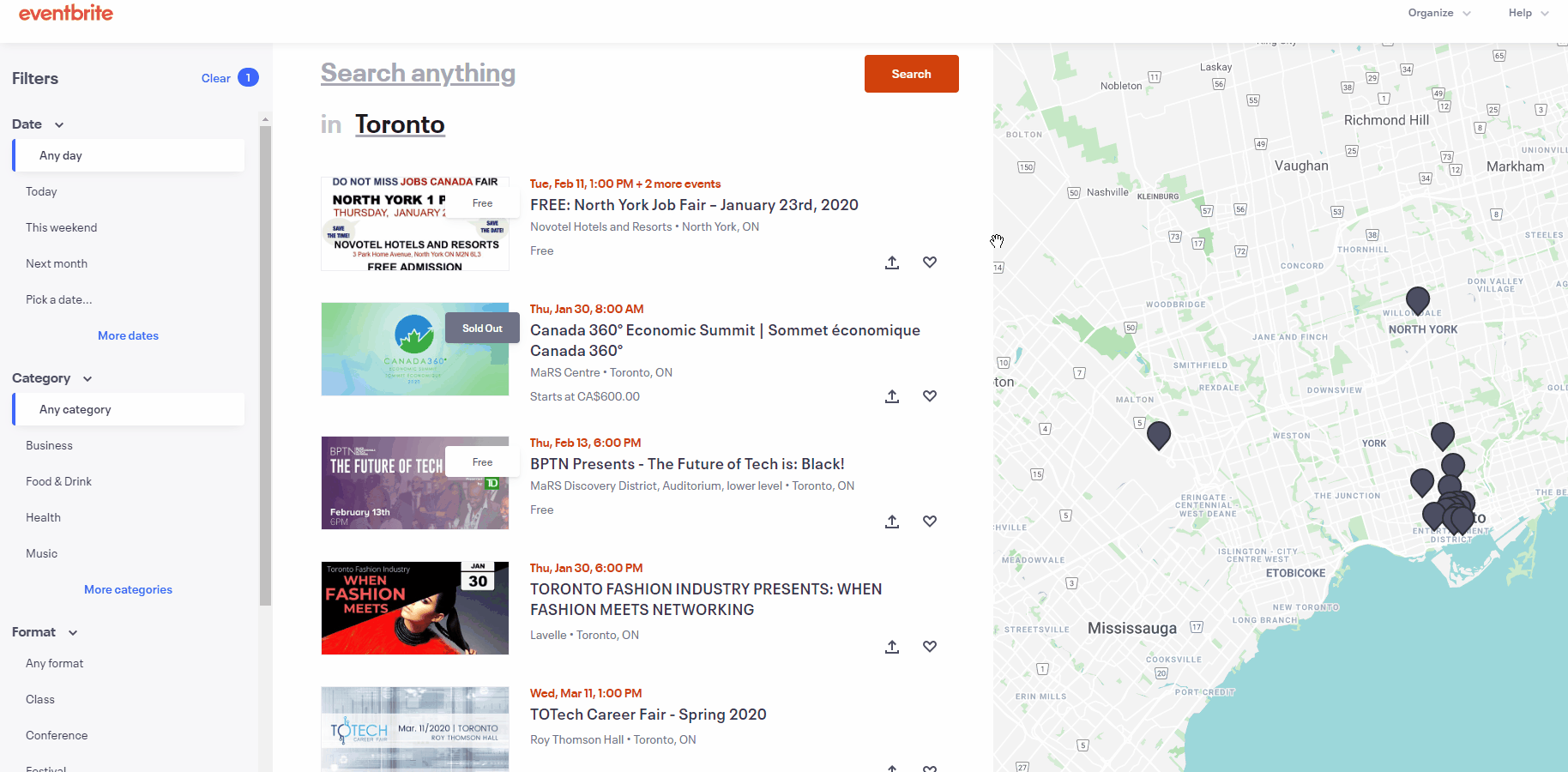
Make a list of events you’d like to attend and plug them into Google Calendar.
Select a date, hour, and set the event’s information.
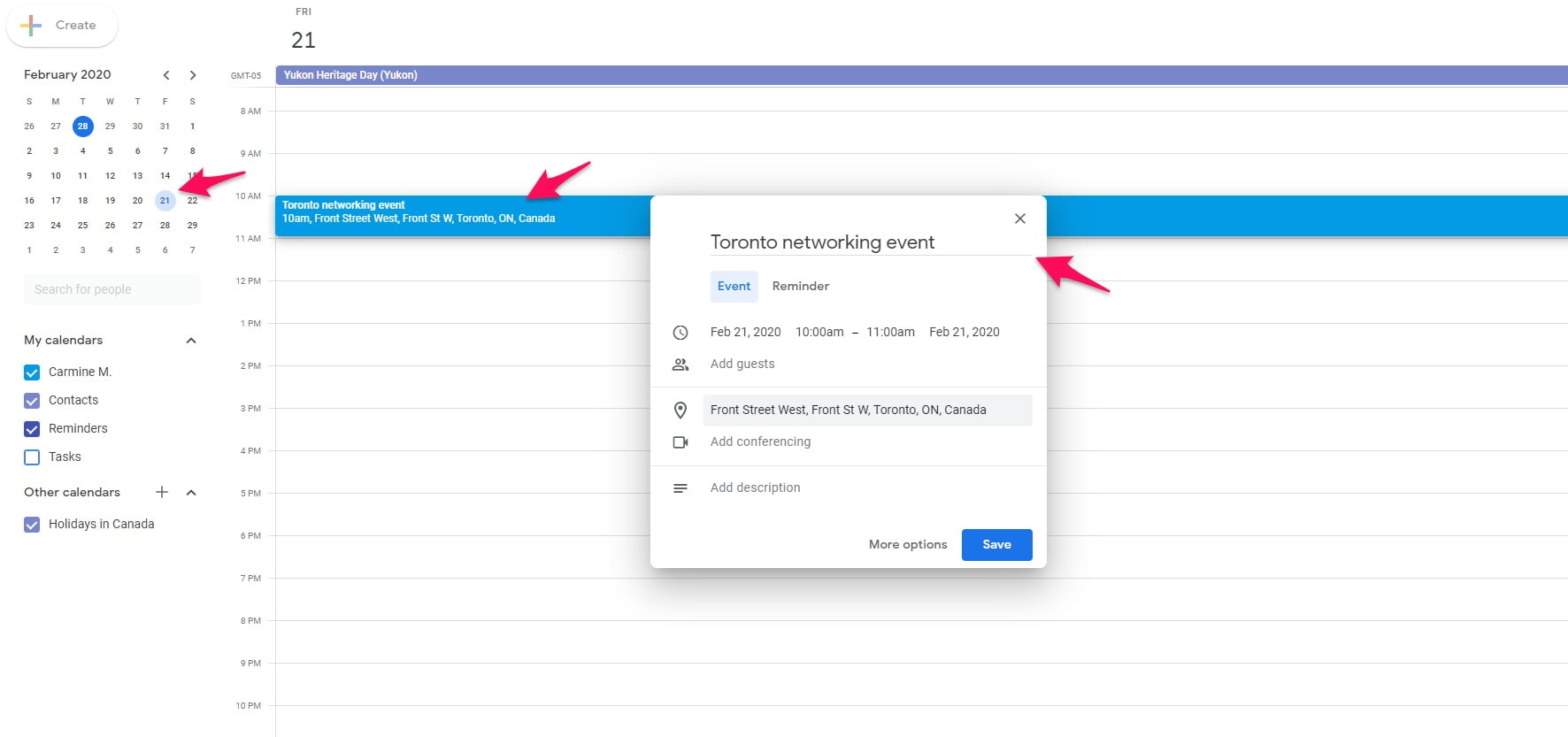
That brings me to my next point.
Step 2: Bring plenty of business cards
Never attend a networking event empty-handed.
And no, I’m not talking about holding a beer!
I’m talking about business cards.
You’re going to want to keep in touch with everyone you meet and cards are the best way to do so.
There are many different services you can use to print hundreds of cheap business cards at once.
Pro tip: avoid glossy cards because you can’t write on them.
Use a printing service like MOO to print custom cards.
Select a type of business card along with your desired size and corner style.
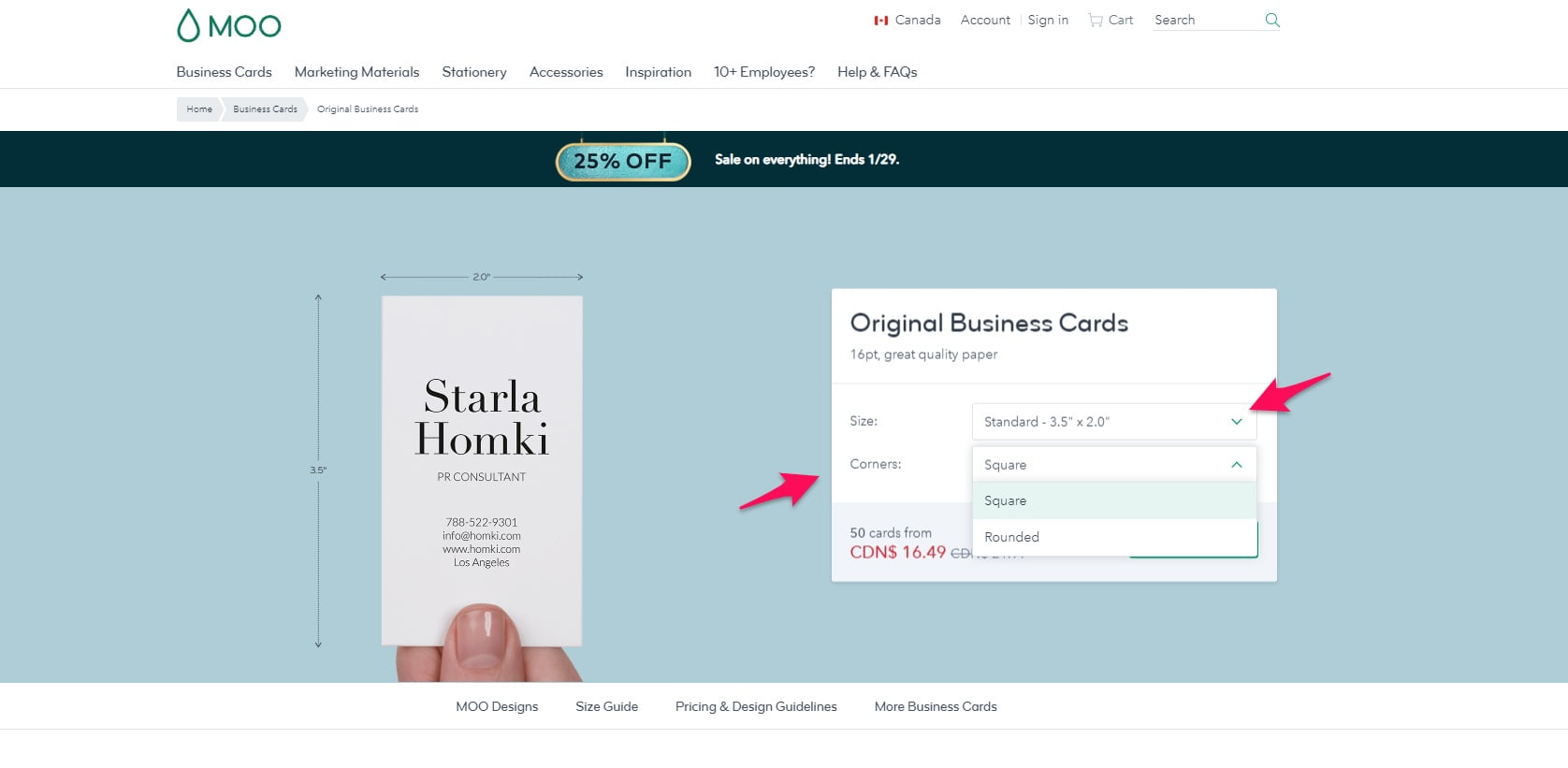
Then, begin designing them with a template, from scratch, or using a previous design.
Let’s presume you customize a free template.
Select any area like the phone number or name section to edit it.
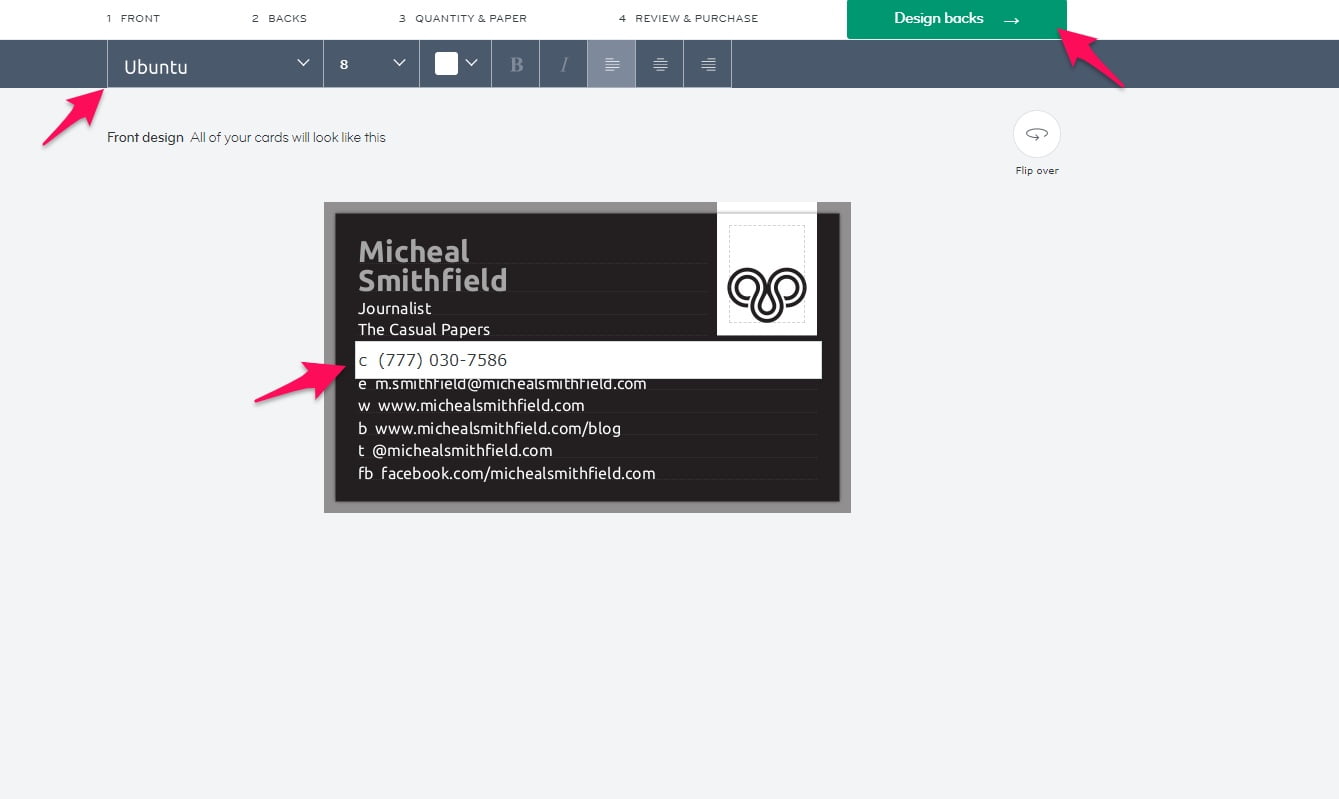
Design the back, choose what quantity and paper style you want, and finalize the order.
Step 3: Dress the part (First impressions matter)
First impressions matter. They matter a lot, actually.
We make a judgment of someone within the first 0.1 seconds of meeting them.
More importantly, the judgment is based on appearance, body language, and subtle queues.
This is most likely an evolutionary mechanism to keep us safe.
If someone seemed sketchy back in caveman days, we’d avoid them, to begin with.
It’s very important to dress professionally for this reason. It complements your brand and personal image.
Others will think more favorably of you and be more likely to approach you first.
You don’t have to suit up if you don’t want, either. Business casual clothing like dress shoes, khakis, and a sweater is more than enough.
Antonio from Real Men Real Style schools us on how to dress professionals in this video:
The same general rules apply to women, as well.
Blazers, dress shirts, and professional attire are universal.
Step 4: Chat it up
You walk in the door.
Your palms are sweaty, knees weak, arms are heavy. (If you like Eminem, you’ll get this joke.)
That’s normal.
You’re walking into a crowd of strangers so a little discomfort is typical.
The key is to not avoid the fear or anxiousness but simply carry it with you.
Unless you’re a natural extrovert, you’re going to want to be a wallflower and wait for people to speak to you.
72% of professionals say someone’s appearance and handshake greatly impact their impression.
So, I suggest taking the liberty to say hello to others first. It shows confidence and assertiveness.
Grab some food, a drink, and sit down with others. The proximity will force the conversation.
Practice an elevator pitch, too. This sums up what you do and the value it offers.
However, don’t be that guy.
You know what I’m talking about: the guy peddling his cards and doesn’t care to learn anything about the other person.
I only hand cards out if they’re asked for and I always try to learn about the other person. What are their hobbies? How did they get into business? How long have they’ve attended this specific event?
Next you know you’re talking about their kids, working out, gardening, and random topics. That’s networking.
Doing this enough is guaranteed to generate leads, referrals, and opportunities.
Blog—you’re a writer, after all
You’re a writer.
So, you should write as much as possible.
That’s why blogging is an effective way to generate copywriting leads.
In fact, the more often you blog, the more clients you acquire.
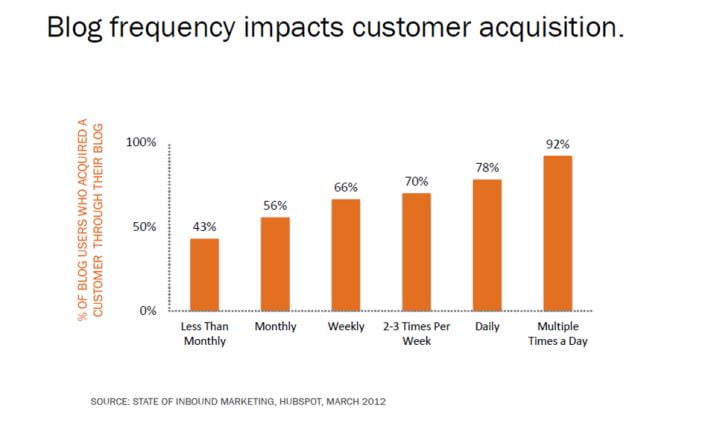
This is because it attracts leads to your website, helps them learn about your expertise, and creates an opportunity to connect.
As much as you’d love to write about your dog, it probably won’t generate leads.
Write about topics that your ideal client would be searching for: marketing strategies, copywriting tips, etc.
Make them actionable, data-driven, and offer step-by-step instructions.
I also suggest learning to create a lead generation funnel with lead magnets and email marketing software.
This will create an automated system that practically prints money. 💲
Check out my previous blog posts to learn how:
- Lead Magnet Guide – How to Generate More Leads Easily
- How to Get Digital Marketing Clients Steps in 3 Easy Steps
- The Best Email Marketing Tools That Will Explode Your Subscriber Count
This is one of the most effective ways to get copywriting clients with no experience.
Why?
Because you’re displaying your skill as a writer with each article and building a portfolio at the same time.
Prospect on LinkedIn
Do you target B2B companies?
If so, you’re missing out on a goldmine if you’re not prospecting on LinkedIn.
It’s where all of the top executives and ideal B2B clients hang out.
That’s not to mention you can achieve crazily high open and response rates for one reason…
It’s social media.
Not email.
Not cold calling.
People are instantly interested when they have a new connection request or message.
They are much more likely to engage with you versus the hundreds of emails they receive every day.
Leads can also instantly check out your profile to see if you really walk the walk.
Here’s how to begin:
Step 1: Search for position-related keywords
What’s your ICP?
(Don’t give me that blank stare.)
An ideal customer profile describes who your client is: their position, duties, strengths, weaknesses, and so forth.
Right now you only need their job title. Search it on LinkedIn and click the “People” tab.
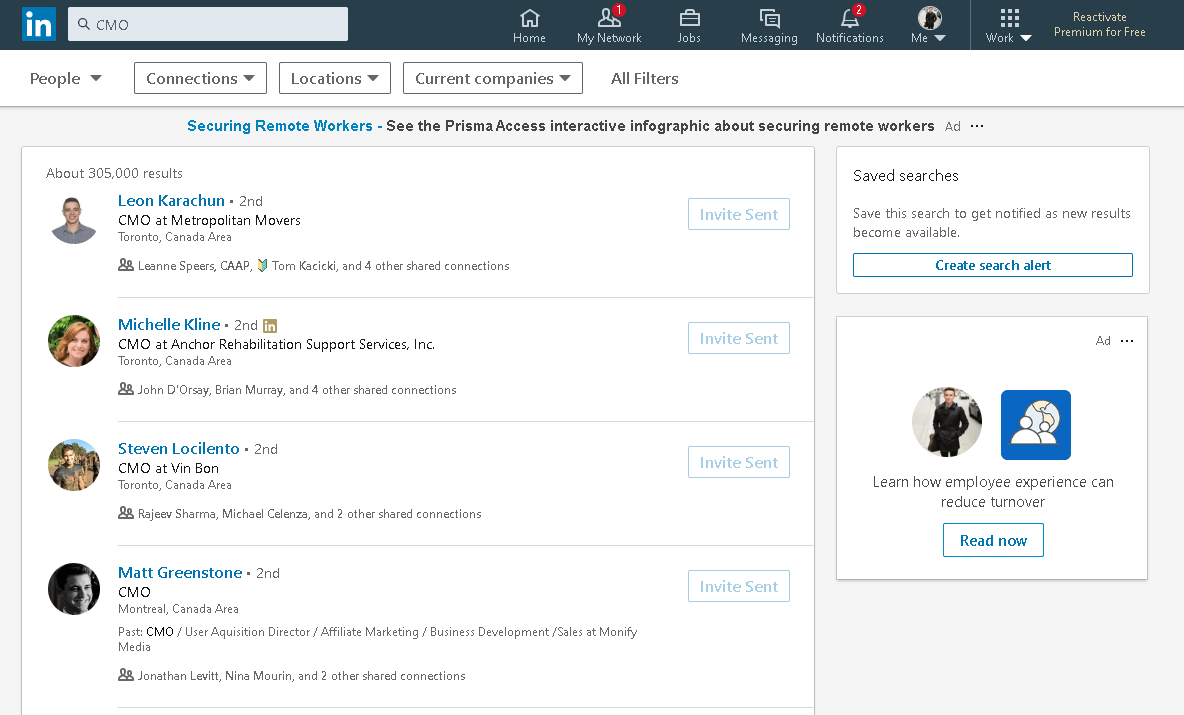
Step 2: Do your research
Once you have found a prospect, it’s time to do some detective work.
Sending a copy and pasted message like “Hey I’m Bob and I write copy. Wanna give me work?” will work terribly.
The key is finding unique information about the prospect and working that into the message in the third step.
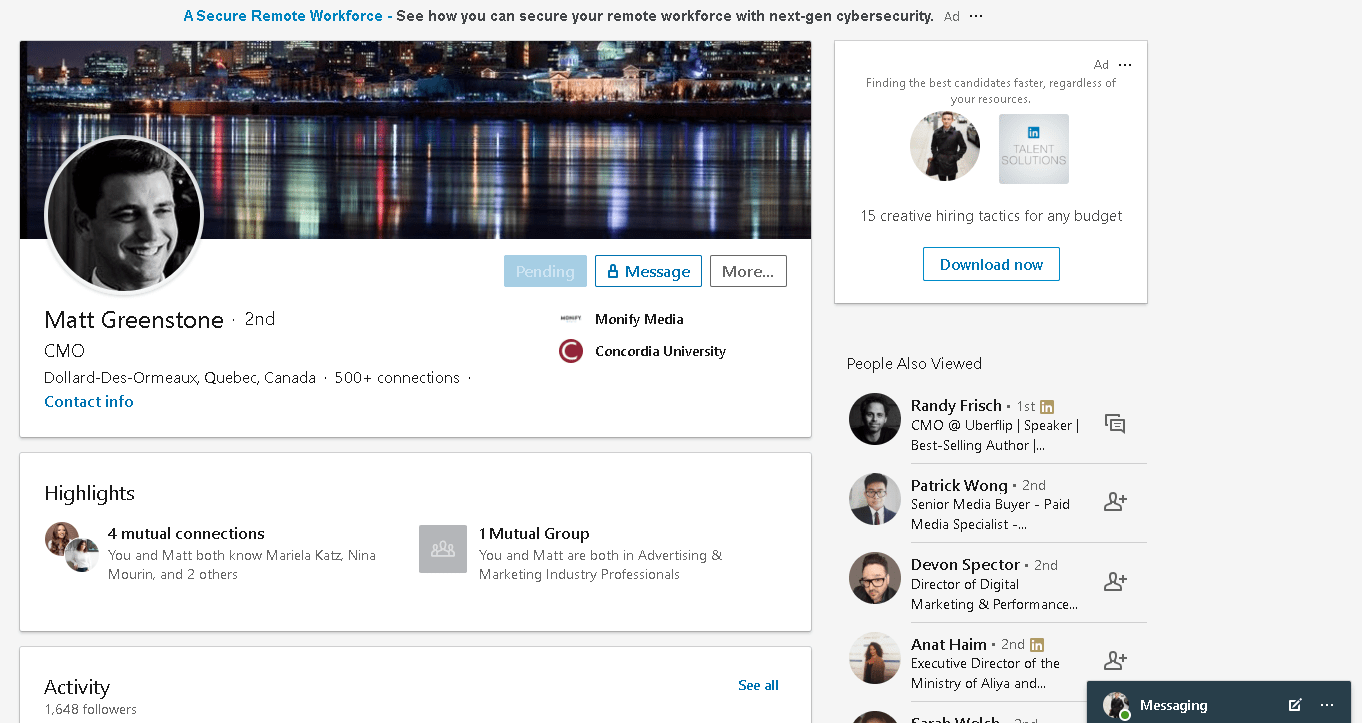
Scroll through their profile and look for:
- Where they’ve worked.
- Where they went to school.
- Where they’ve volunteered.
- Interesting projects they’ve worked on.
- What their favourite sports teams are.
- What hobbies they enjoy.
Note anything that stands out and move onto the third step.
Step 3: Send a customized message
The goal of an initial outreach message is to establish contact, introduce yourself, and give context about what you offer.
It should be light and personal to act as a stepping stone into a phone call or further discussion.
Try this template that’s converted well for me and my students:
Hey {First name},
{Custom observation}.
My name is {Name} and I’ve helped clients like {Clients} achieve {Result}.
Does {Company name} need any help with {Service}?
Warm regards,
{Name}
It’s simple. Straight to the point.
There’s no beating around the bush and it’s much more genuine than 99% of what’s sent by others.
Make sure to follow up with leads if they don’t respond as they’re busy people.
Respect their inbox but keep in touch to maximize conversions.
Ask for them (literally)
Do you know where most freelance writers get their work frmo?
Referrals.
This is the age-old driver of most business. In fact, 25% of freelancers can find work within 24 hours.
It works like this:
- You do a good job. ✅
- Client recommends you to others. 😎
While you could wait around for clients to talk about you to friends over a beer, it isn’t very likely.
I’ve had it happen in many circumstances but what works better is simply asking.
You’d be pleasantly surprised how many clients will happily suggest your services to other business owners if they’ve had a good time working with you.
After all, finding great freelancers is like a needle in a haystack.
Here’s a template you can customize to ask for referrals:
Hey {First name},
I hope you’ve been great. It’s been a great pleasure working with {Company name} on {Project}.
I’m always looking to take on new accounts with likeminded people so I wanted to ask if you knew anyone in the industry that could use my services.
Feel free to shoot them my email or what you think works best.
Warm regards,
{Your name}
Summing up how to get freelance copywriting clients
Learning how to get more copywriting clients can be what makes or breaks your business.
I’ve been writing for nearly eight years now and have a steady stream of high paying projects.
The secret?
The three strategies I outlined today: cold emailing, networking, and blogging.
They will set you up to have a constant pipeline of work while generating referrals and creating a legitimate brand.
What strategy are you going to try first?














